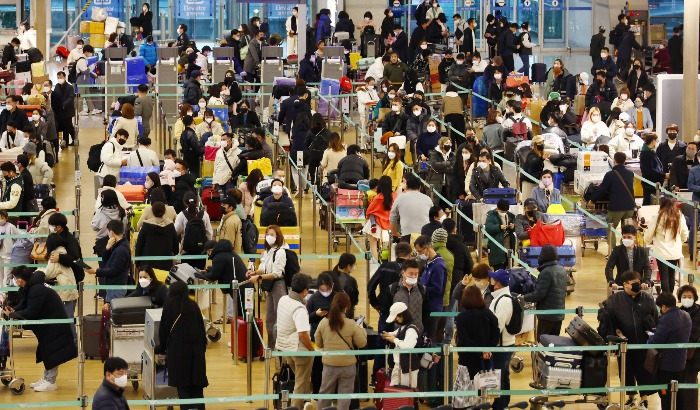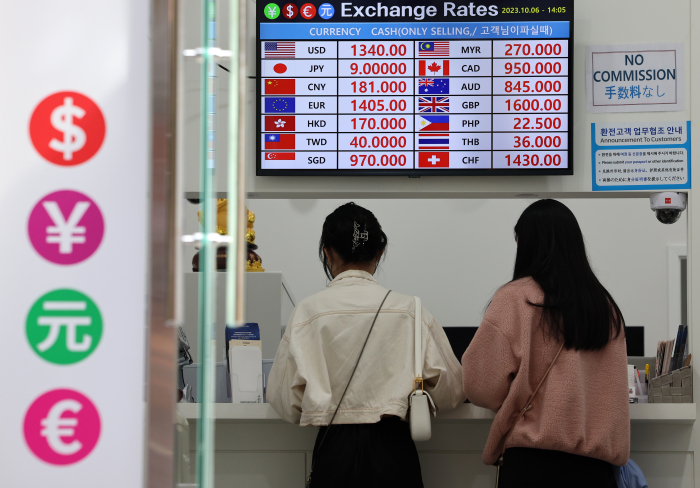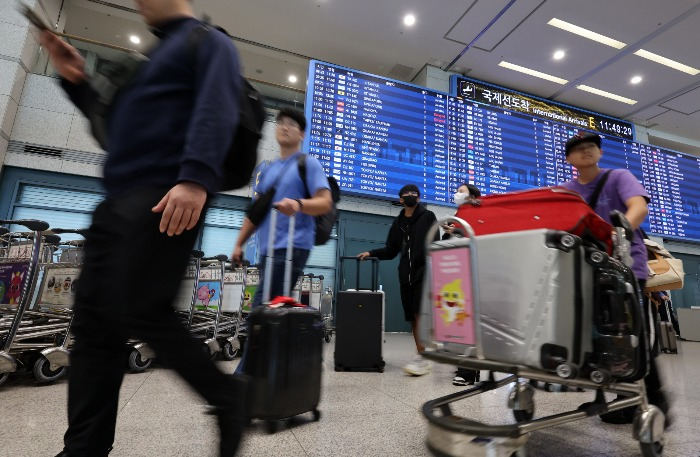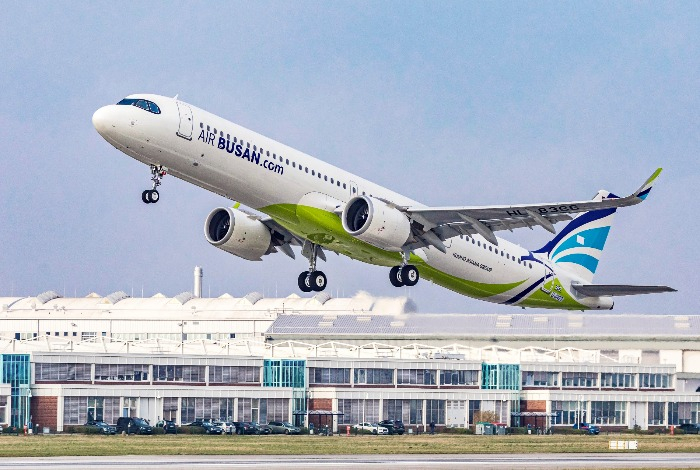Overseas trips top pre-pandemic levels during Chuseok holiday
Pent-up travel demand outweighs higher exchange rates and peak-season ticket prices than in 2019
By Oct 08, 2023 (Gmt+09:00)
LG Chem to sell water filter business to Glenwood PE for $692 million


Kyobo Life poised to buy Japan’s SBI Group-owned savings bank


KT&G eyes overseas M&A after rejecting activist fund's offer


StockX in merger talks with Naver’s online reseller Kream


Mirae Asset to be named Korea Post’s core real estate fund operator



The number of South Koreans who spent this year’s six-day holiday of Chuseok abroad exceeded pre-pandemic levels, indicating a recovery in the travel industry hit hard during the three years of COVID-19.
The Chuseok holiday, also known as Korean Thanksgiving, lasted from Sept. 28 and Oct. 3 after the government declared Oct. 2 as a temporary national holiday. It was one of the longest breaks in South Korea.
A total of 737,687 people took overseas flights from airports in South Korea, including the country’s largest Incheon International Airport, during the holiday period, according to the Incheon International Airport Corp. and Korea Airports Corp. on Oct. 7.
During the 2019 Chuseok holiday, before COVID-19 broke out, 717,7710 people departed from South Korean airports.

Pent-up demand for post-pandemic trips outweighed high exchange rates and peak season flight ticket prices on the back of the softening won and high inflation.
To serve the increasing number of holidaygoers, domestic airlines have resumed flights and launched new international routes.
The Korean currency has weakened 14% to the dollar as of Sept. 27, compared to the 1,156.4 at the end of 2019.
It closed local trade at 1,349.3 on Sept. 27, a day before the almost week-long holiday began.
SURGE IN FLIGHT TICKET PRICES
The round-trip airfare from Seoul to Vietnam more than tripled to 700,000-1 million won ($520-$740) during the national holiday period, compared to the off-season price of 200,000-300,000 won.
“Flight tickets for the Chuseok holiday were almost sold out a month ago,” said an airline industry official.

The Incheon International Airport was the busiest airport in South Korea during the period. A total of 588,749 travelers took international flights from South Korea’s largest airport.
The figure is higher than the 540,903 in the comparable period of 2019.
In 2020 when the Chuseok holiday lasted five days, the number of overseas travelers departing from South Korea plunged to 13,577 in the wake of the COVID-19 outbreak.
AIRPORTS IN SMALLER KOREAN CITIES
By contrast, smaller Korean airports have yet to feel the recovery in overseas travel demand. The number of overseas holidaymakers using their airports remained below pre-pandemic levels.
A total of 154,253 people took international flights at provincial airports in the country, about 20,000 fewer than 173,929 in 2019.

Industry watchers said the lack of foreign airlines and a limited number of international routes available at provincial airports delayed their recovery.
Further, air carriers in South Korea have yet to secure as many aircraft as they did before the pandemic, so their operations were focused on the Incheon International Airport.
But the airline industry official expressed an upbeat outlook for domestic airport operators.
“The winter season begins at the end of October, and the number of routes departing from local regions is expected to increase further,” one of the officials noted.
“New aircraft are arriving from the end of this year and the number of travelers using local airports is expected to completely recover to pre-COVID levels during the Lunar New Year holidays next year.”
The 2024 lunar New Year holidays are Feb. 9-12 in Korea.
Write to Mi-Sun Kang at misunny@hankyung.com
Yeonhee Kim edited this article.
-
 AirlinesBudget carriers turn around with highest-ever profits in Q2
AirlinesBudget carriers turn around with highest-ever profits in Q2Aug 08, 2023 (Gmt+09:00)
2 Min read -
 Travel & LeisureHanatour sees surge of package tourists in June
Travel & LeisureHanatour sees surge of package tourists in JuneJul 04, 2023 (Gmt+09:00)
1 Min read -

-

-
 AirlinesS.Korea's Air Premia to launch Incheon-New York route in May
AirlinesS.Korea's Air Premia to launch Incheon-New York route in MayMar 17, 2023 (Gmt+09:00)
1 Min read -
 Aerospace & DefenseS.Korea's budget carriers seek expansion via more overseas flights
Aerospace & DefenseS.Korea's budget carriers seek expansion via more overseas flightsMar 17, 2023 (Gmt+09:00)
1 Min read -
 AirlinesJeju Air resumes daily flights to Hanoi, Ho Chi Minh City, Vientiane
AirlinesJeju Air resumes daily flights to Hanoi, Ho Chi Minh City, VientianeFeb 07, 2023 (Gmt+09:00)
1 Min read -
 AirlinesJeju Air to resume flights on Incheon-Shizuoka route in March
AirlinesJeju Air to resume flights on Incheon-Shizuoka route in MarchFeb 03, 2023 (Gmt+09:00)
1 Min read -
 Travel & LeisureTravel sales for SE Asia, Japan sell out in South Korea
Travel & LeisureTravel sales for SE Asia, Japan sell out in South KoreaJan 15, 2023 (Gmt+09:00)
2 Min read -
 AirlinesS. Korea's T'way Air to resume Incheon-Chiang Mai route
AirlinesS. Korea's T'way Air to resume Incheon-Chiang Mai routeNov 17, 2022 (Gmt+09:00)
1 Min read


